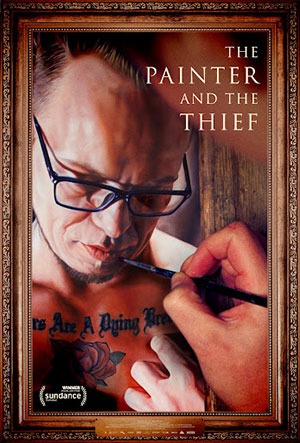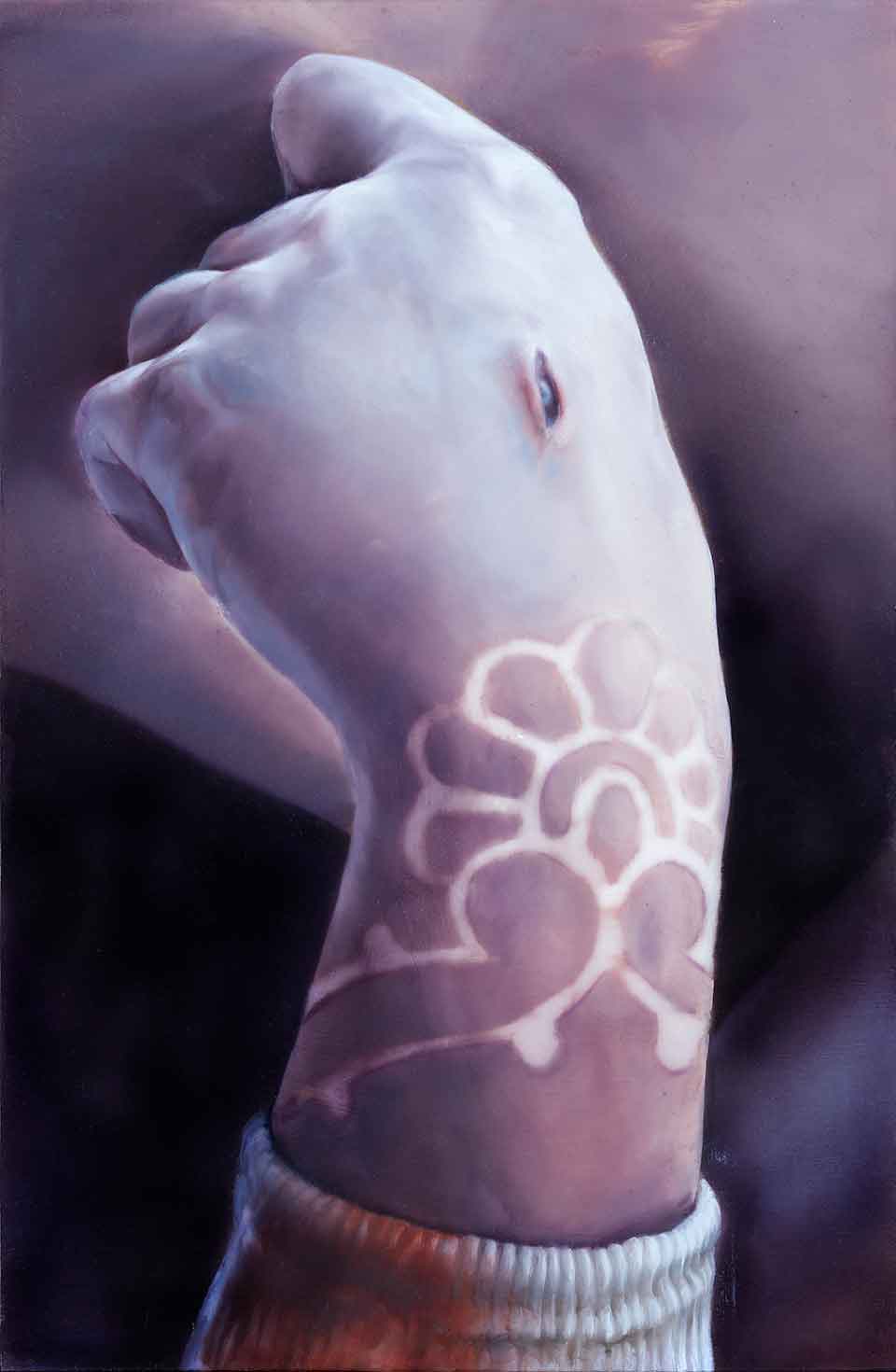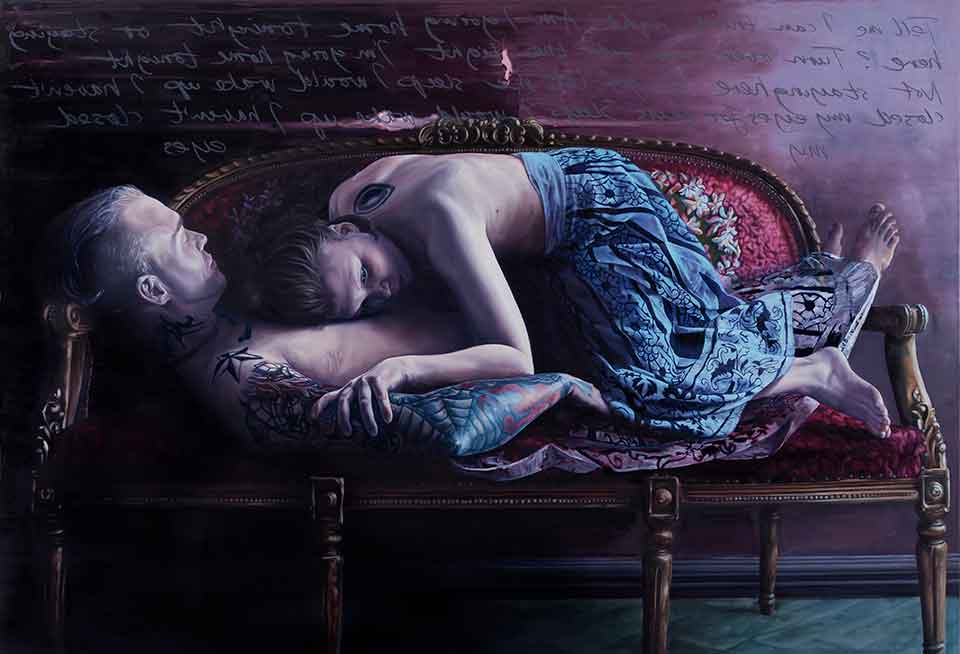Only connect! That was her whole sermon. Only connect the prose and the passion, and both will be exalted, and human love will be seen at its height. Live in fragments no longer. Only connect, and the beast and the monk, robbed of the isolation that is life to either, will die.
—E. M. Forster, Howards End
I was on a plane the other day, underslept and overstimulated after an eventful two-month trip to Colombia. The sensible thing to do would have been to sleep during the three-hour flight to Florida, but I could not resist seeing what in-flight entertainment was on offer. I scrolled past The Joker, which I’d been meaning to watch on more than one occasion, and was about to click on it, when the evocative title of another film caught my eye.

I was further intrigued to learn that the movie with the novelistic title (think Dostoevsky, Banville, or Highsmith) was, in fact, a documentary from Norway. The Painter and the Thief was initially intended to be a ten-minute film after director Benjamin Ree learned of this unusual story from the Norwegian newspapers. As the documentary developed into the full-length film it is now, director Ree described it this way: “what we humans do in order to be seen and appreciated.”
I decided that it was probably best to pass up on The Joker—who needs more cynicism, violence, and madness in their lives (however well acted)—and instead take a chance on another culture. And I’m grateful that I did! It turns out this Norwegian story, shot over a four-year period, is told in English and more gratifying for being true than a work of fiction.
The gripping, devastating documentary (available on Showtime and Kanopy) begins with a crime: two of the most valuable paintings of Czech artist BARBAR (Barbora Barbar Kysilková) are stolen from her exhibition in Oslo, where Barbora has recently relocated. What’s more, her artwork was brazenly carried off in broad daylight, after two hundred staples were patiently and cleanly removed from their frames, suggesting this was no common theft. Thanks to surveillance camera footage and some sleuthing, the criminal is identified and brought to court. That’s when this film begins to get really interesting.
In the courtroom, the intrepid, people-curious artist sees the humanity of the art thief, Karl-Bertil Nordland, and dares to connect. She asks him if he might agree to be painted by her; nonchalantly, the tattooed gangster accepts. Without spoiling the plot, I’ll say that it’s a layered love letter to art, a testament to forgiveness, second chances, the civilizing influence of beauty, the complexities of the human spirit.
The sensitive Karl and fearless Barbora, both in separate romantic relationships, together begin to form an unusually intense and profound platonic relationship. Karl, a drug addict at the time of the burglary, claims not to recall why he stole her work and what he did with it. In answer to Barbora’s insistent questions, all he can offer is that he stole her paintings “because they were beautiful.” The artist is flattered and intrigued. When Barbora shows the tough guy—who is sitting for her—the portrait she has done of him, Karl’s response is heartrending and unforgettable.
The power of art, kindness, and human connection as explored throughout this uncommon life story are truly inspiring. Yet the film does not shy away from portraying the real pain and suffering that these complex characters carry and deal with in different ways. As the painter puts it, describing her own semiconscious experiment with empathy: “What happens if you allow the person who you should condemn . . . to come into your life?”

Following a near-fatal car accident, when Barbora visits Karl in the hospital, she is mesmerized by a wound on Karl’s hand and seeks to give spiritual meaning to his (and her?) suffering by painting his “stigmata.” In addition to their friendship, Karl and his misadventures now seem to serve as muse to Barbora and, somehow, for her to test her own boundaries, by living vicariously through him.
However, friendship is not a one-way mirror, of course. As Karl astutely notes in the second half of this documentary, when we are privy to his perspective: “She sees me very well, but she forgets I can see her too.”
As a writer, I admit that I’m especially susceptible to stories that explore art as a form of therapy—showing us how it can save the artist’s life and, in turn, transform the viewer/reader by making them feel seen and heard in ways that, sometimes, even those humans closest to them cannot. In The Painter and the Thief, we come to see that it is the refined and artistic side of the thief, along with a darkness/brokenness in the artist, that draws these two together and makes them soul mates. Both, in a sense, are saved by Art as well as the magic and mystery of human connection.
To get a fuller appreciation for the photorealistic art that brings together these unlikely kindred spirits, you might care to visit artist Kysilková’s virtual gallery.
Ft. Lauderdale, Florida
